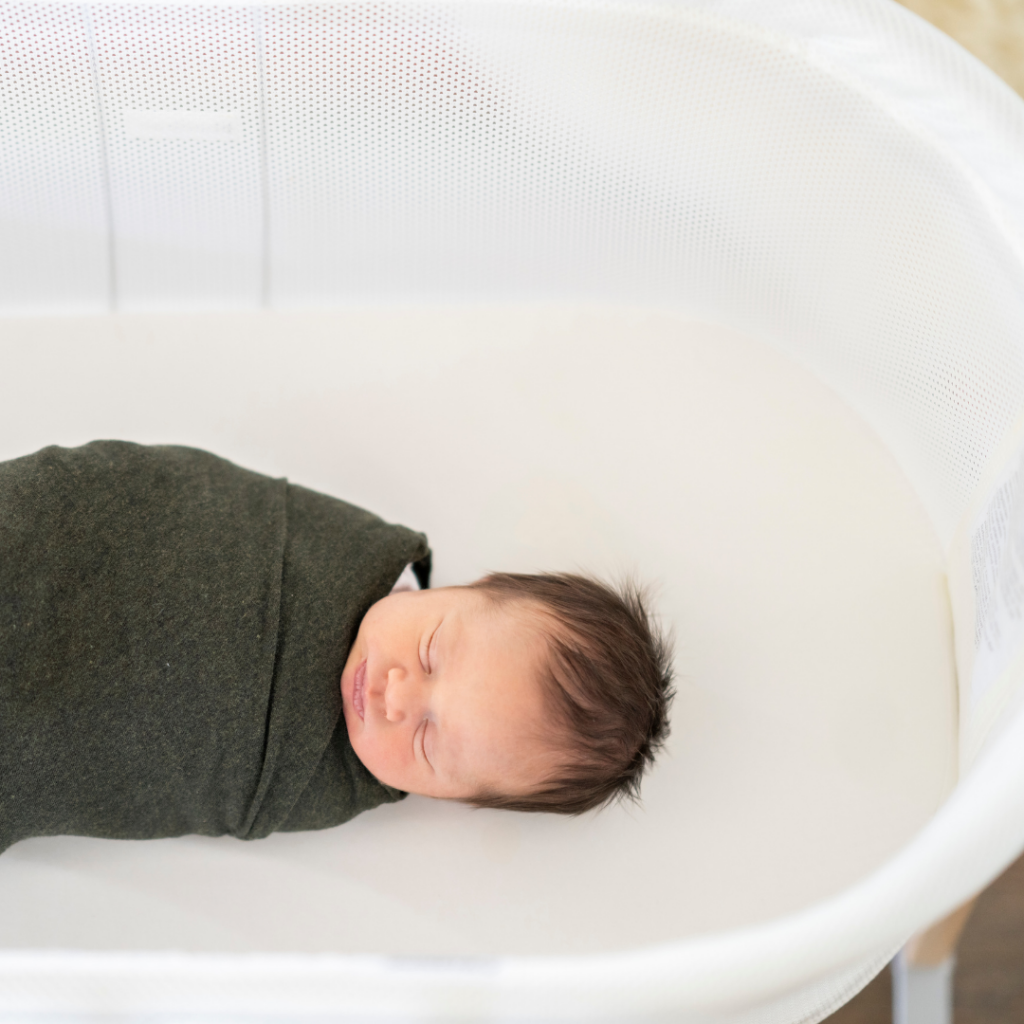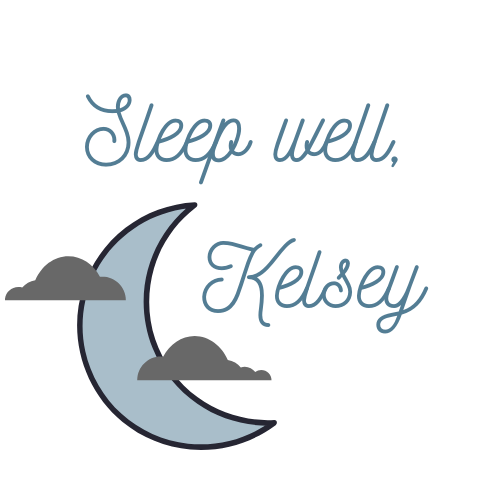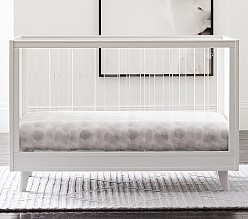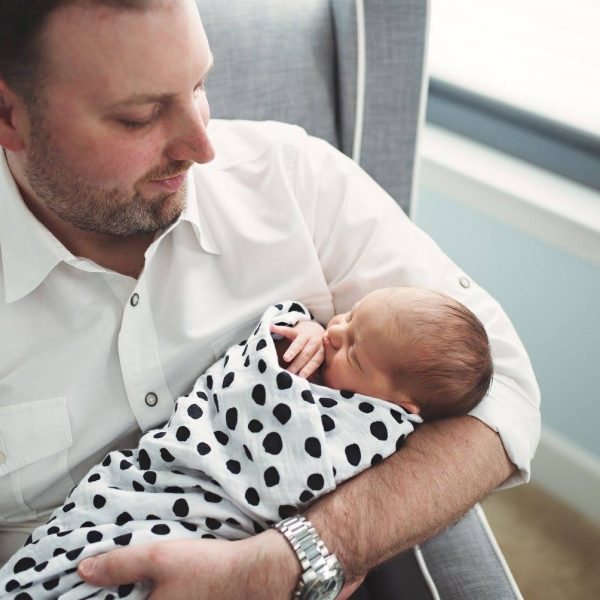
Once you become a parent you learn very quickly that life is a series of transitions, and so many come within that first year. With newborns, they need so much overnight care and attention that having them in your room not only makes the most sense, but it’s recommended by the American Academy of Pediatrics (AAP).
First, let’s talk about how long to have baby in your room
Every family will ultimately make their own decisions here. My job is to make the evidence clear so you can make an informed parenting decision. The guidelines by the AAP published in 2016 stated that “the bassinet should be placed in the parent’s bedroom for at least 6 months but preferably a year”. The evidence of prevention of sudden infant death is highest in the first 6 months and room-sharing without bed-sharing is one of many ways to prevent this.
After 6 months most evidence is more geared towards the goal of continued breastfeeding if the child is still nursing once a night or early morning and it is preferred by the mother to be close by for this feeding.
Always talk with your child’s pediatrician or care provider to assess other risk factors you or your baby may have that may change this decision to make it shorter or longer time that you spend in the same room.
If your care provider gives the ok I generally tell clients to move baby at some point after 6 months because older babies and children have a harder time with separation after 9-12 months of age.
How is the SNOO different than a standard bassinet?
The SNOO was developed by Dr. Harvey Karp as an additional way to help soothe your baby during the newborn time period. It is a wonderful safe sleep environment when used correctly! The key is to wean off the additional rocking/motion features before your baby gets too attached to them and doesn’t learn independent sleep skills. So while the SNOO is said to use through 6 months (or when baby can get on hands and knees), I recommend transitioning to a larger crib and removing the swaddle once your baby starts to show signs of rolling over (which is the AAP recommendation as well) which for most babies is between 4-7 months (and for some as young as 2 months).
Watch my interview on NBC Washington about making the transition from the SNOO to crib!
Now let’s talk about how to make this transition!
- Start with naps! By 3 months or so (if not done sooner) start by offering at least nap #1 of the day in the crib and then slowly increase the number of naps per day in the crib. The first nap of the day is most predictable (aim for 1.5 to 2 hours after waking for a 3-month-old) and they aren’t yet overtired from the day so it’s a great starting point!
- Out of swaddle or hands-free so they can start to explore and find the position they are comfortable sleeping in. Always place to sleep on their back and if they roll over then it’s ok to leave them be if they are comfortable. Also don’t worry about using a “transition swaddle” just jump right into an arms free sleep sack.
- Develop independent sleep first! If your baby knows how to fall asleep on their own then moving to the crib won’t be a major change here. Need help figuring this out? Check out my newborn through 4-month sleep guide and we’ll dive all into how to teach this!
Lastly make sure that the nursery is safe before you make the transition! Things that don’t make the transition easier (or safer) are items like DockATot, bumpers, sleep suits etc. I know instagram may make you feel like you need it, but I promise you DON’T! Need to know how to make a safe AND stylish nursery? Check out my nursery checklist below.
You got this mama!



